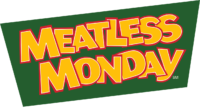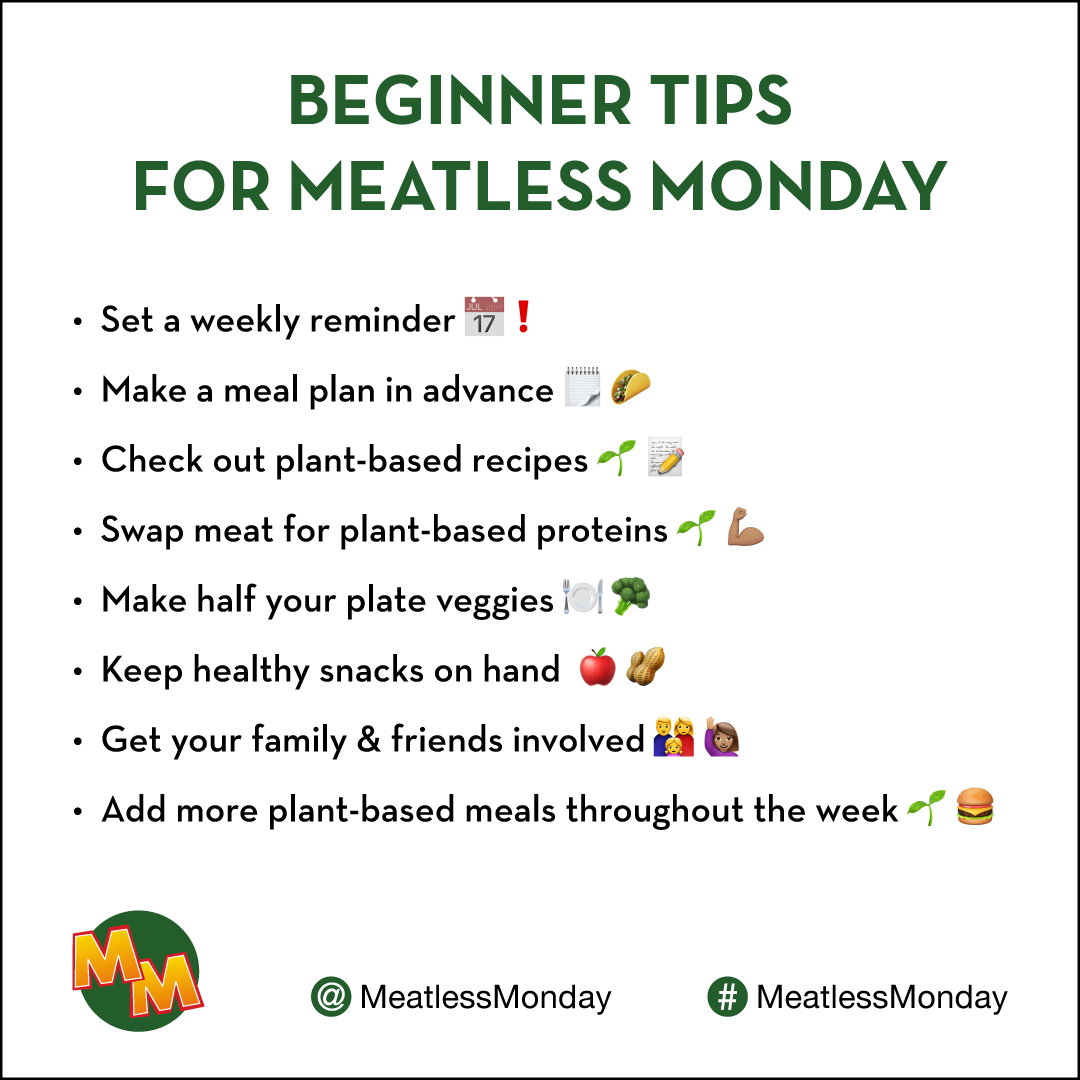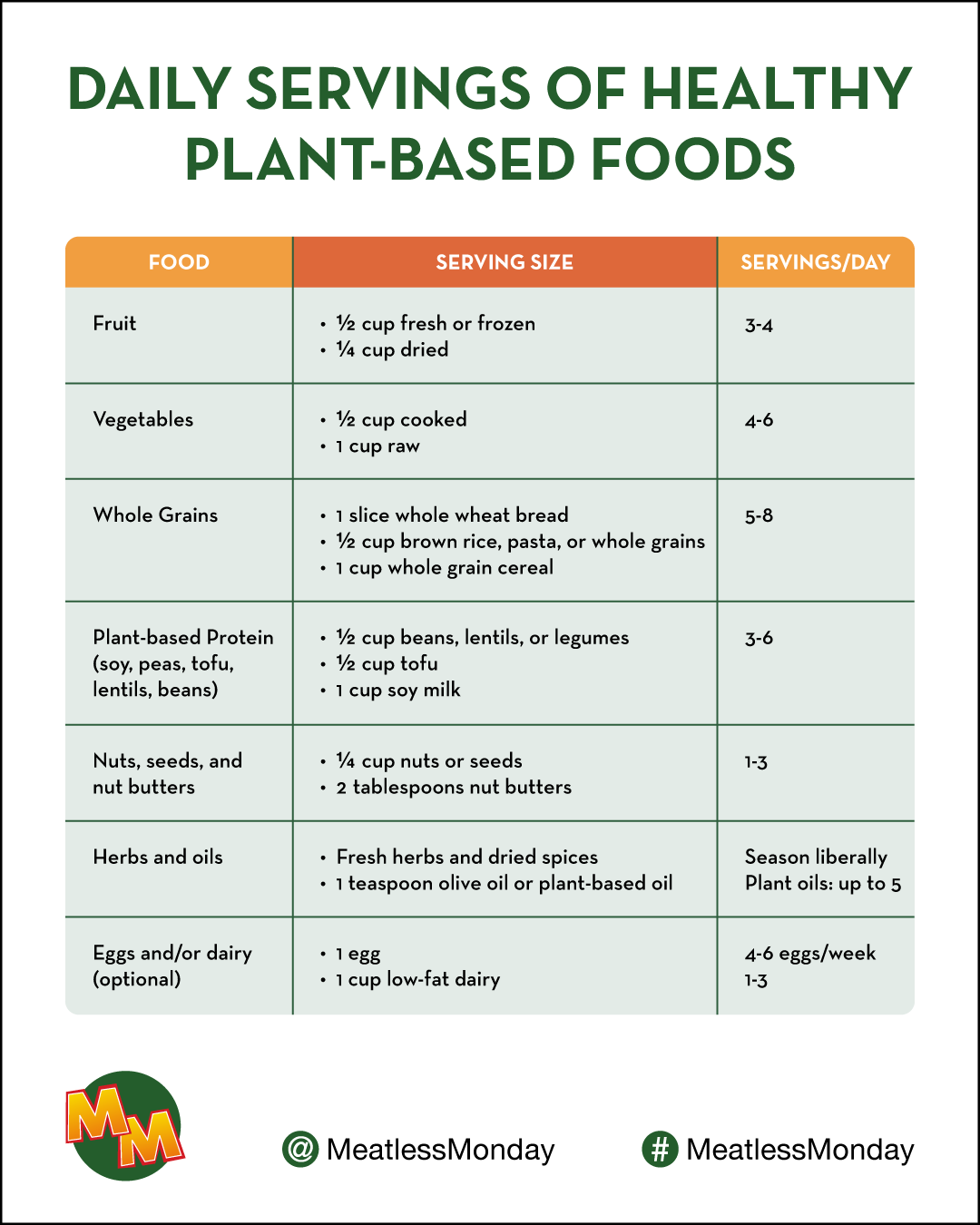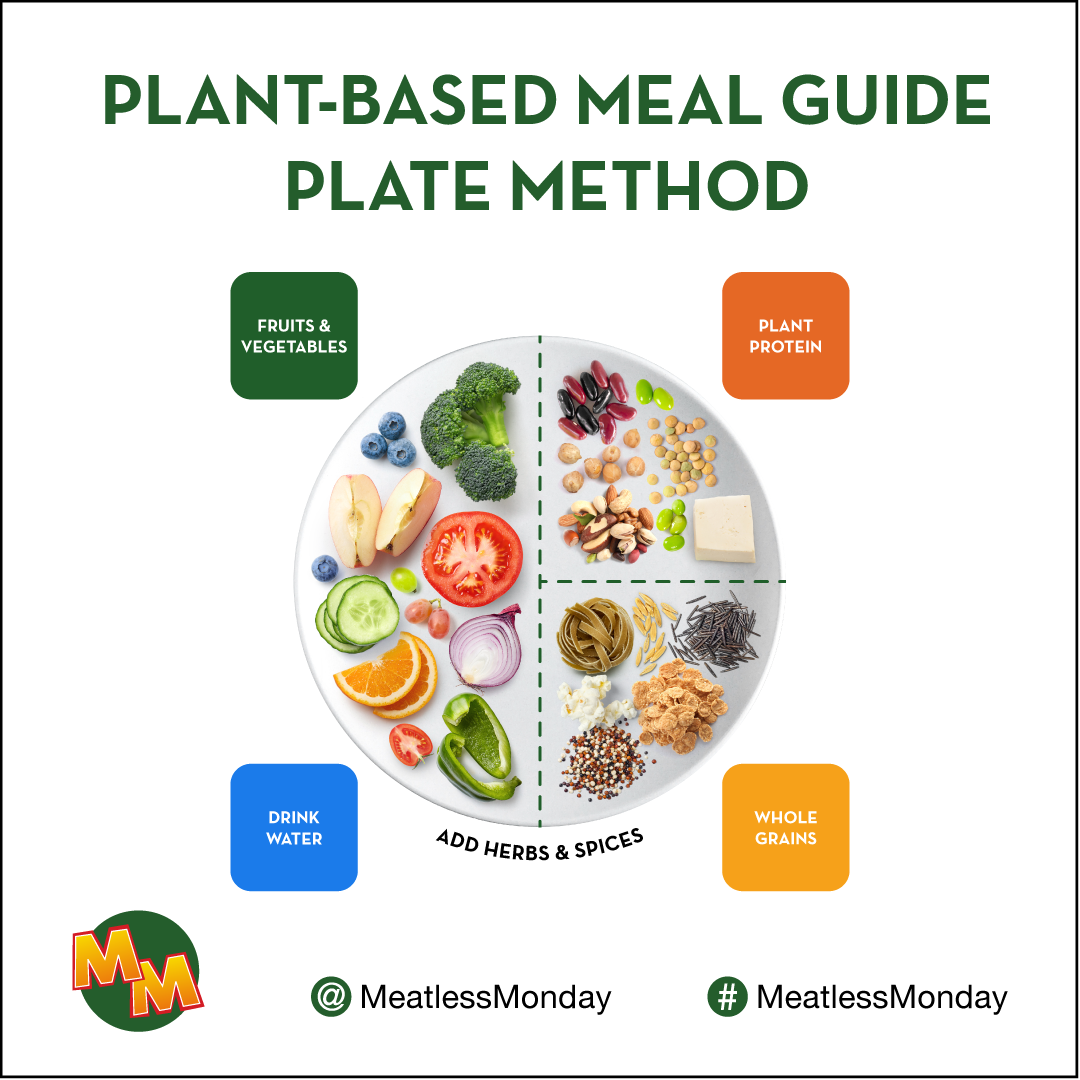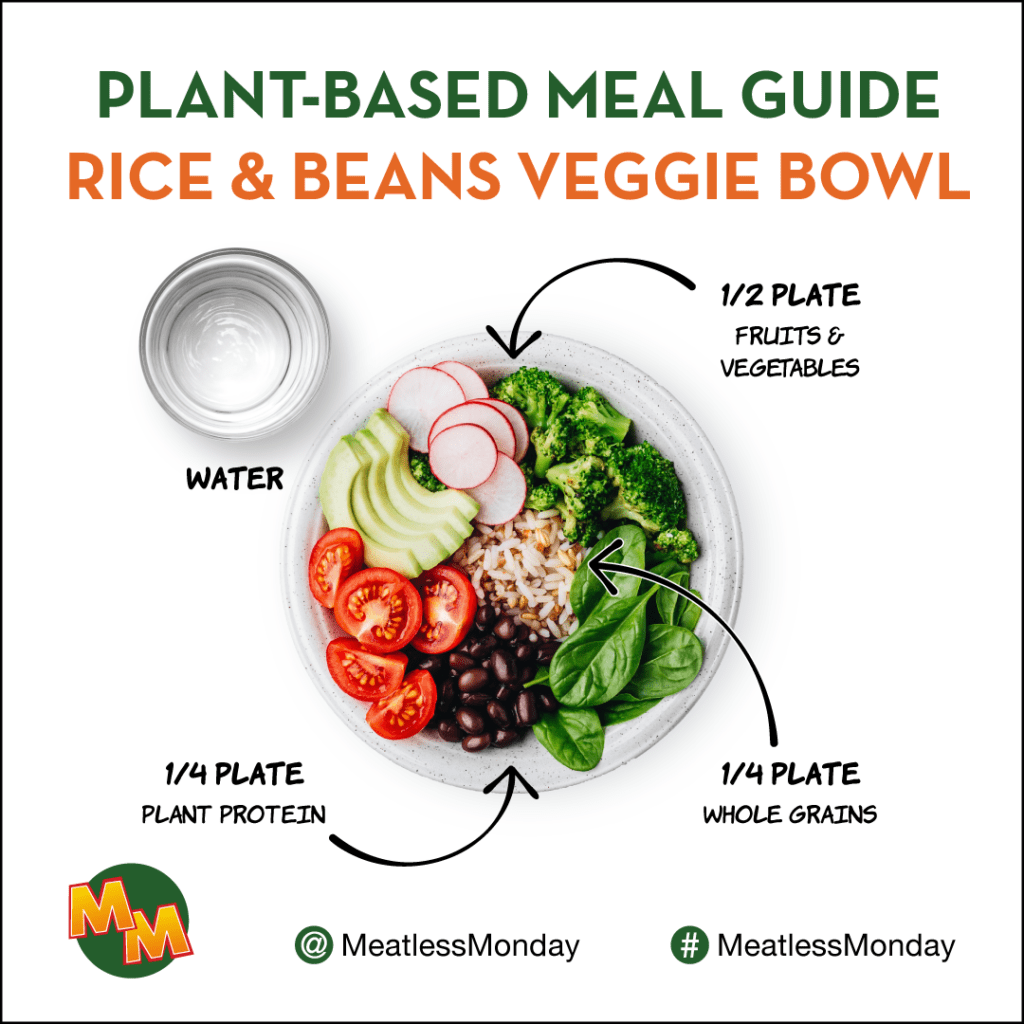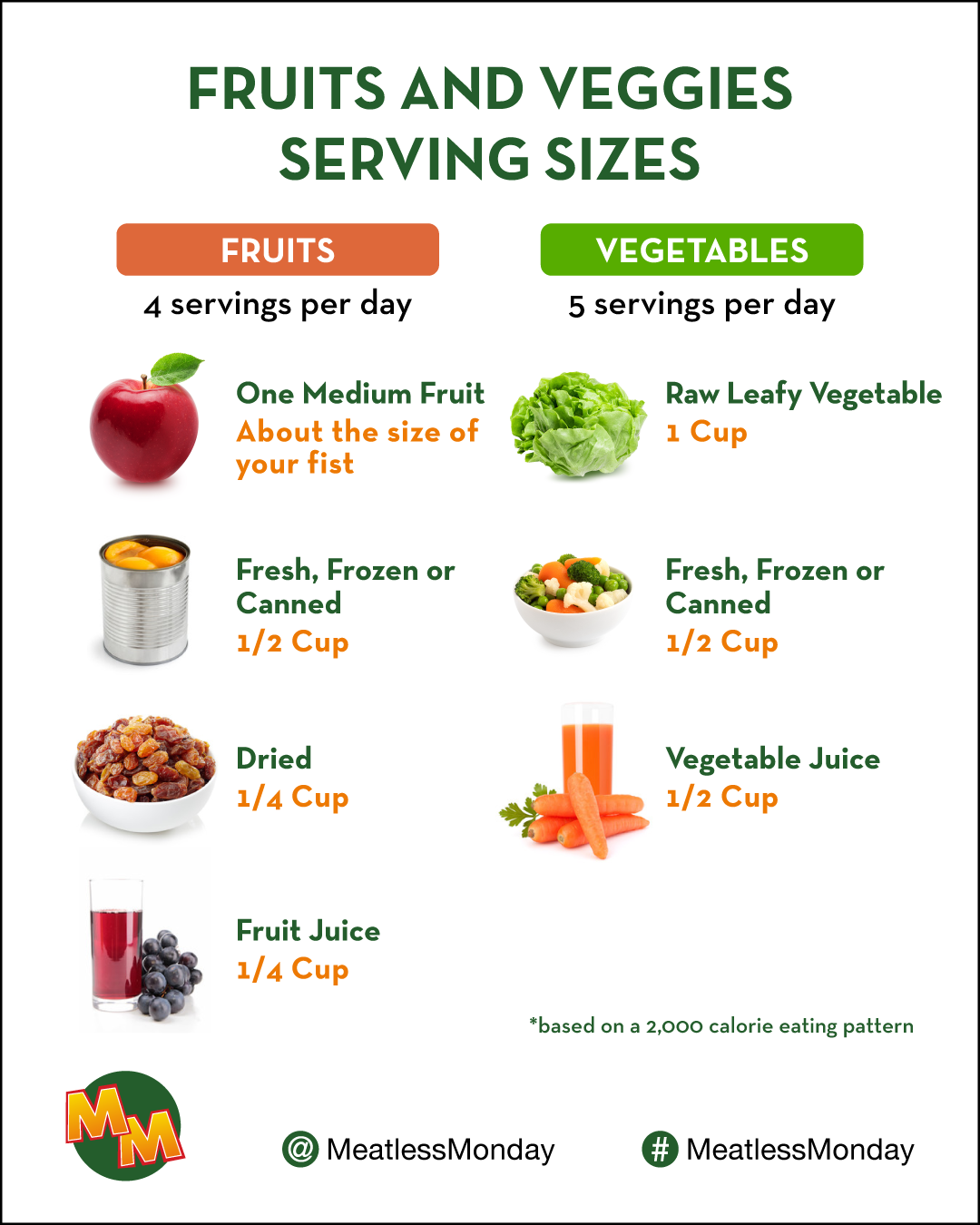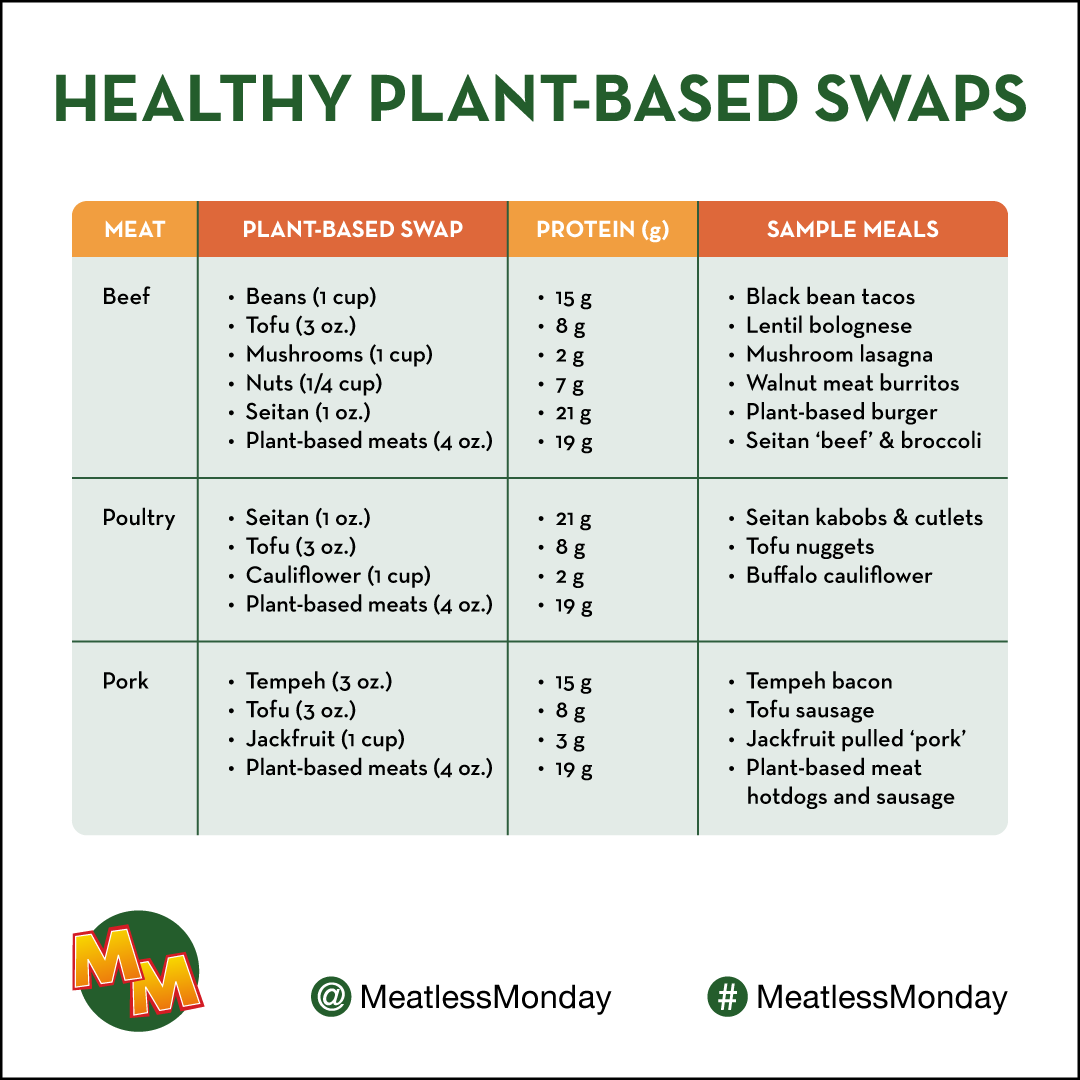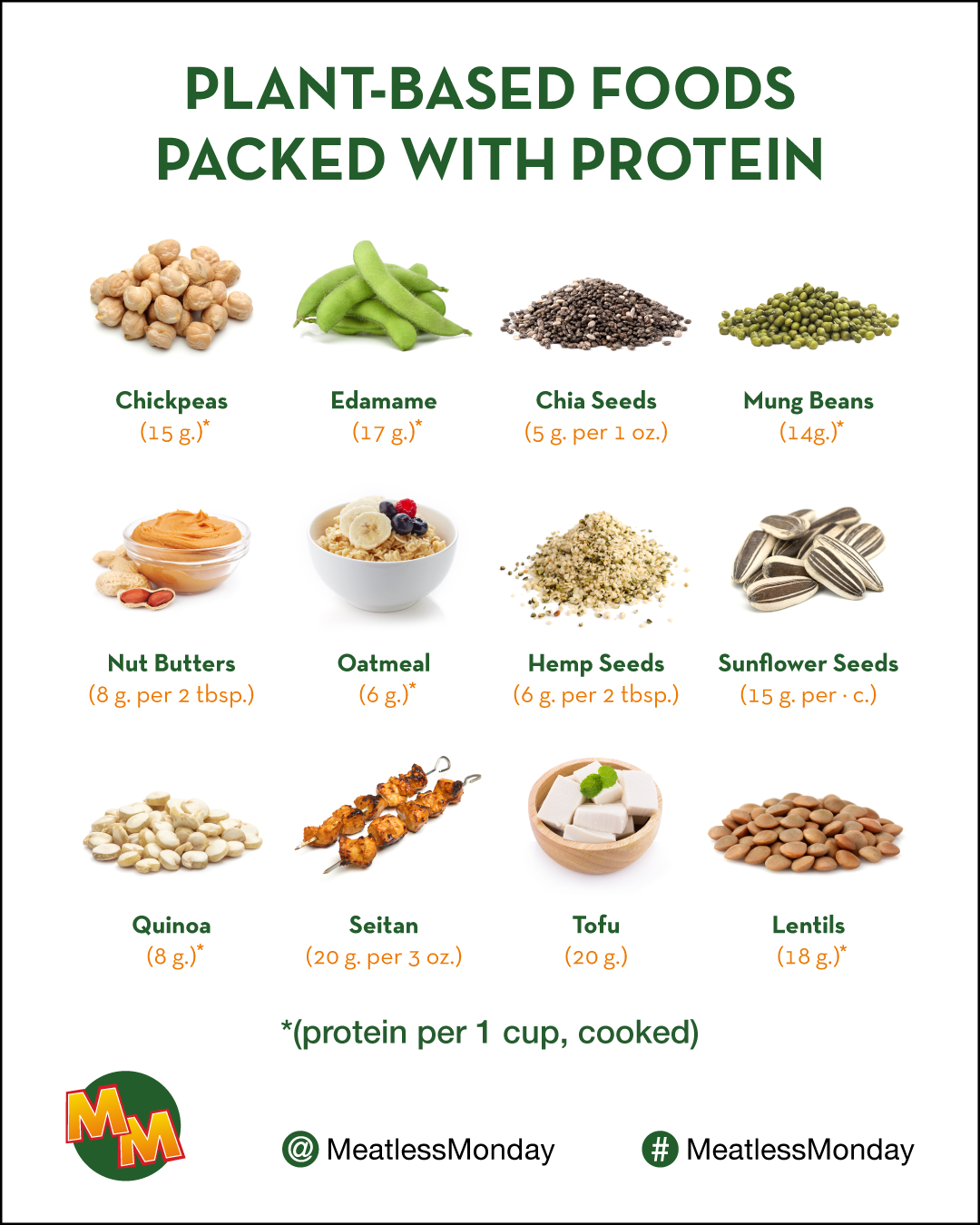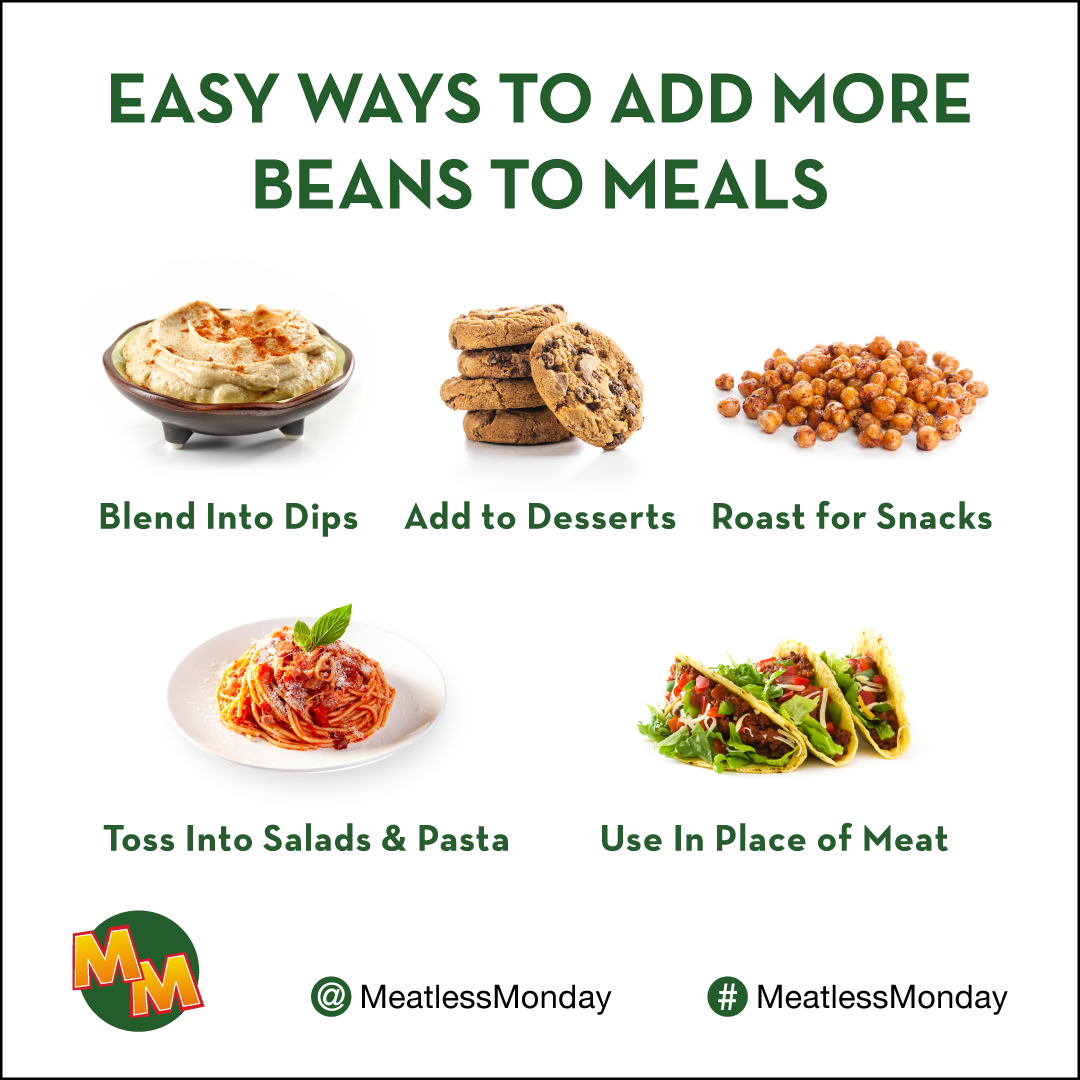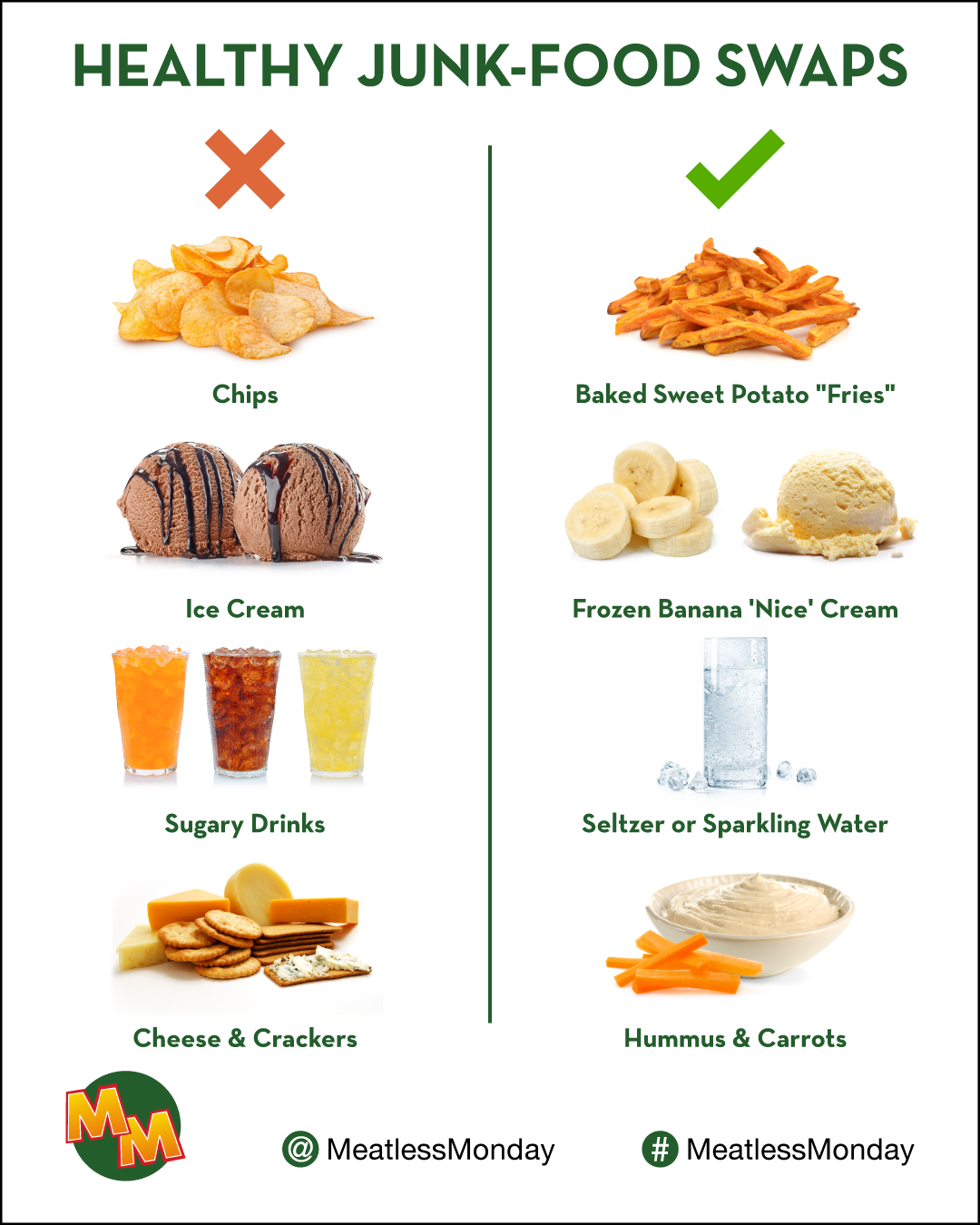Healthy Eating Guide
How to Eat Healthier with Meatless Monday
Most Americans eat 1.5 times more protein than required each day.1 Eating less red and processed meat and more plant-based foods can lower your risk of heart disease, high blood pressure, chronic kidney disease, type 2 diabetes, certain cancers, and obesity. One study showed the consumption of processed meats is associated with 42% higher incidence of coronary heart disease and 19% higher risk of diabetes.2
Start a healthier eating habit with Meatless Monday. Eating more fruits, vegetables, beans, and whole grains can help you stay healthy and live longer. As a bonus, many people who start their week with Meatless Monday tend to eat healthier all week long.3
Below are easy-to-follow guides and information about Meatless Monday and plant-based meals including: protein, serving sizes, recipes, and sample meals.
Ready to eat? Browse hundreds of plant-based recipes and sign-up for our weekly newsletter for easy recipes and tips.
All information has been produced with our scientific partners at Johns Hopkins Center for a Livable Future.
Healthy Eating Guide 1-Page Summary
Click each image below to download
Eat Healthy with Meatless Monday
Eating more plant-based meals is a great way to begin a healthy eating habit that can reduce your risk of heart disease and diabetes – get started with Meatless Monday. Learn more ways to eat healthier with plants.
Getting Started with Meatless Monday
Starting a new habit can be hard but taking small steps, like Meatless Monday, can help you build a lifelong healthy eating routine. Get started today with our easy and delicious 6-week meal plan.
Take the Meatless Monday Challenge – a free 12-week program that makes meat reduction easy and delicious.
Recommended Daily Servings by Food Group
Many people new to plant-based meals have questions about protein and what foods they can eat instead of meat. Here are food groups and daily serving sizes adults should aim for each Meatless Monday.
Have questions about plant-based nutrition? Learn more about plant-based meals from our nutrition experts.
Use the Plate Method to Make Easy Healthy Meals
The ‘plate method’ is an easy way to eat healthy without much effort. Simply make your plate 



Not a fan of veggies? Try our top tips for making vegetables taste great.
Enjoy Your Favorite Meals, Made Plant-Based
Use the ‘plate method’ to recreate healthier versions of your favorite meals. Start by making your plate 



Need help getting started? Try our easy and delicious 6-week meal plan.
Add More Fruits & Veggies to Meals
Aim for 4-5 servings of fruits and vegetables each Meatless Monday (and the rest of the week!). Pro tip: one serving is about the size of your fist. 
There are many tasty ways to add more fruits and veggies to your meals: try plant-based recipes, add frozen vegetables to soups, stews, and Bolognese sauce, and add finely chopped veggies to dishes like enchiladas and lasagna.
Easy Meatless Recipes for People Who Want to Eat More Vegetables.
Plant-based Swaps for Meat
What do I eat instead of meat?!? There are many delicious and nutritious plant-based protein options for Meatless Monday… and beyond.
Here are a variety of plant-based proteins that can be found at most grocery stores.
Pro tip: make your favorite meaty meal and simply swap out the meat for a plant-based option.
Learn more about plant-based proteins and easy swaps for beef, chicken, pork, and even bacon.
Protein-Packed Plant-based Foods
There are many protein options for Meatless Monday… and beyond. Swapping out meat for a plant-based choice is healthier and can add flavor and variety to your meals.
Beans are an excellent and versatile option, make your favorite comfort foods with tofu, and combine grains, nuts, and seeds for even more protein.
Add More Whole Grains to Meals
Simple 1-for-1 swaps can make your favorite meals healthier. Try whole grain foods like multigrain or whole wheat bread, brown rice, farrow, quinoa, or whole wheat pasta in place of the refined bread, white rice, and pasta.
Try new rice dishes or make your family favorites with whole grains (which also have protein). How to cook whole grains.
Swap Out Meat for Beans
Beans are the ultimate plant-based protein – they are inexpensive, easy to use, and nutritious. They have also been shown to reduce the risk of heart disease, diabetes, and obesity.
Try these delicious ways to eat more beans, Meatless Monday bean meal ideas, and bean cooking tips.
Enjoy Your Favorite Treats, Made Healthier
Eating plant-based doesn’t mean giving up snacks and tasty treats. There are many healthy swaps that will satisfy your cravings, like blending frozen bananas to make ‘nice’ cream instead of ice cream or air fried veggies in place of fries.
Enjoy these better-for-you snacks, iron-rich snack foods, and maybe some plant-based ‘beef’ jerky.
Hungry for more?
Check out our Health Research page for more facts and information about the health benefits of Meatless Monday and plant-based meals.
Please contact info@meatlessmonday.com with any questions or help getting a Meatless Monday program started in your organization, community, or workplace.
Take action today and share the benefits of Meatless Monday with your friends, family, followers, and colleagues. Follow @MeatlessMonday on social media to stay up-to-date on the latest cooking hacks, plant-based recipes, sustainability and health tips, and plant-based news.
Instagram: @MeatlessMonday
Facebook: @MeatlessMonday
Twitter: @MeatlessMonday
LinkedIn: Meatless Monday Official
Hashtag: #MeatlessMonday
[1] What We Eat in America, National Health and Nutrition Examination Survey (NHANES) 2009-2010. https://www.ars.usda.gov/ARSUserFiles/80400530/pdf/0910/Table_5_EIN_GEN_09.pdf
[2] Micha R, Wallace SK, Mozaffarian D. Red and Processed Meat Consumption and Risk of Incident Coronary Heart Disease, Stroke, and Diabetes Mellitus. Circulation 2010;121(21):2271–83. https://www.ncbi.nlm.nih.gov/pubmed/20479151
[3] Data Decisions Group. 2021. Nationally representative panel of 1,010 US adults. https://www.mondaycampaigns.org/meatless-monday/research/nationwide-survey-data
